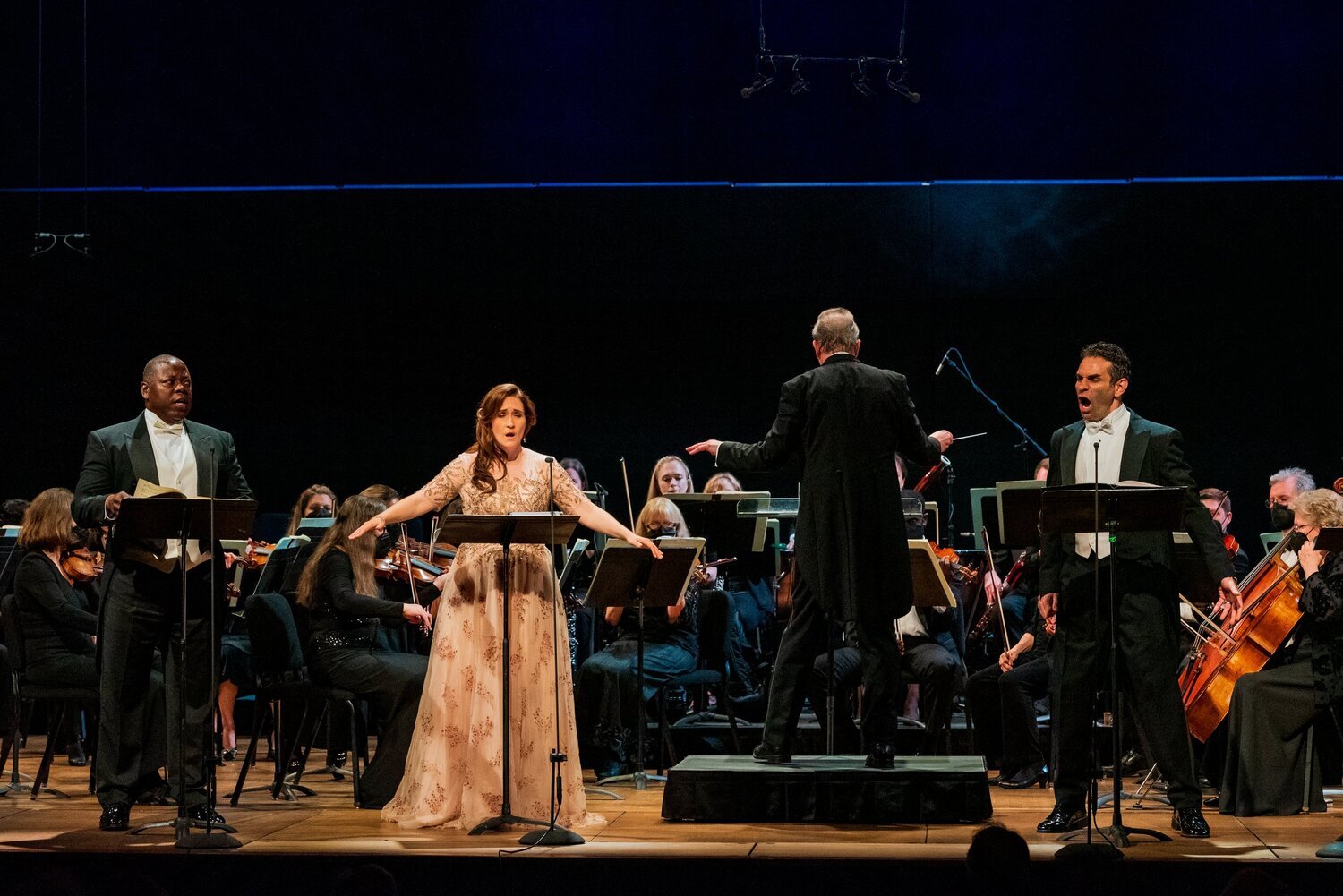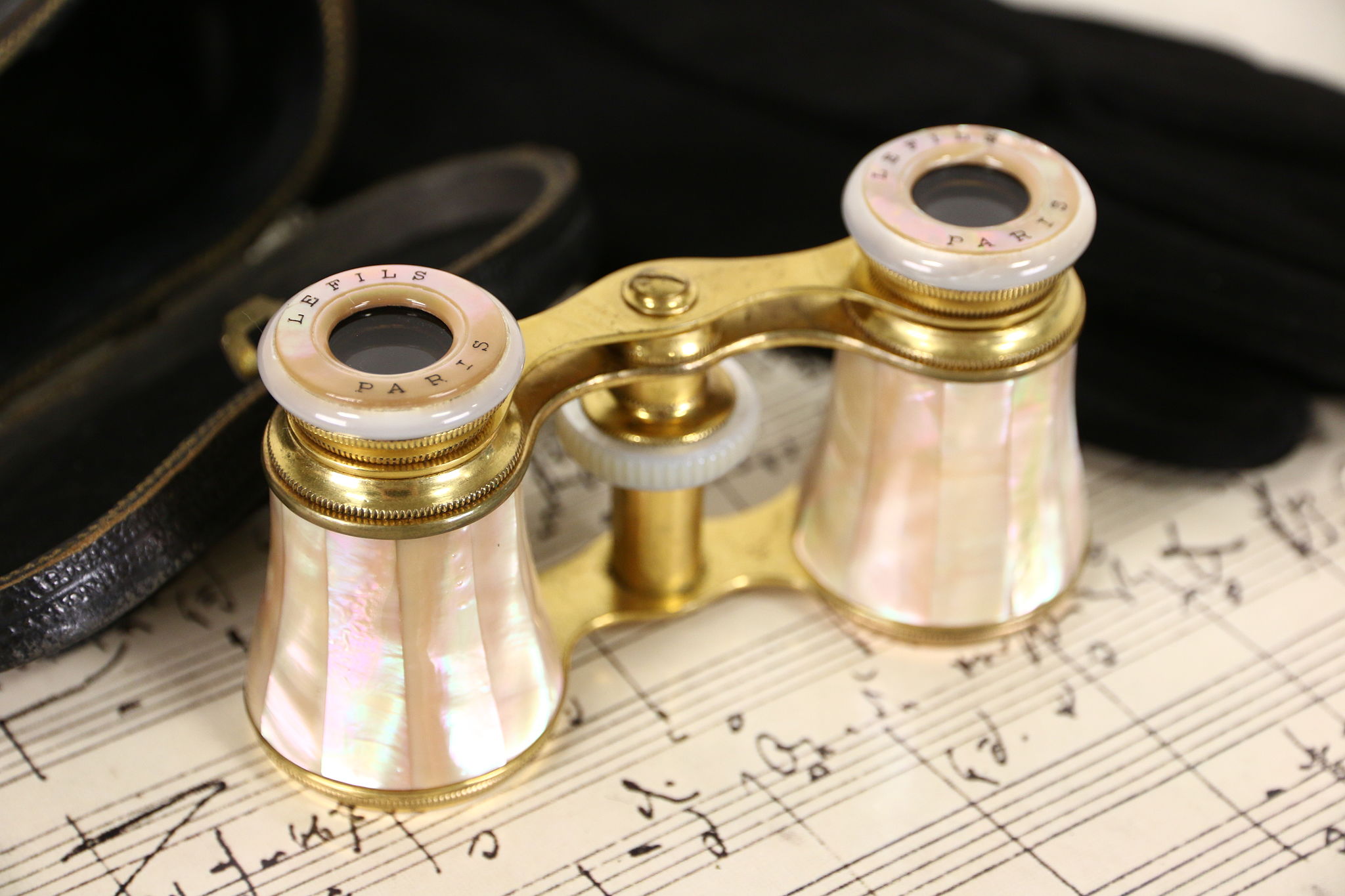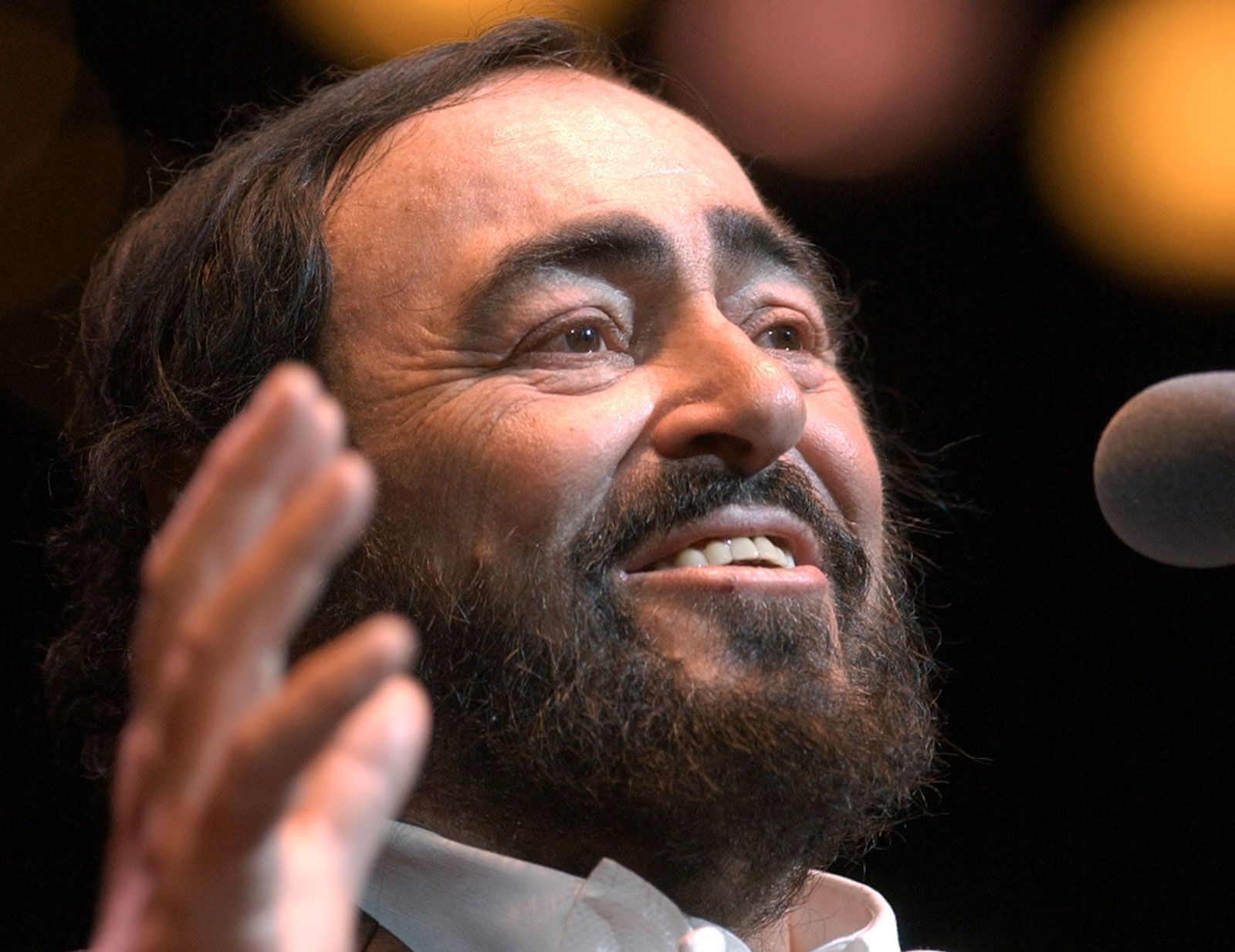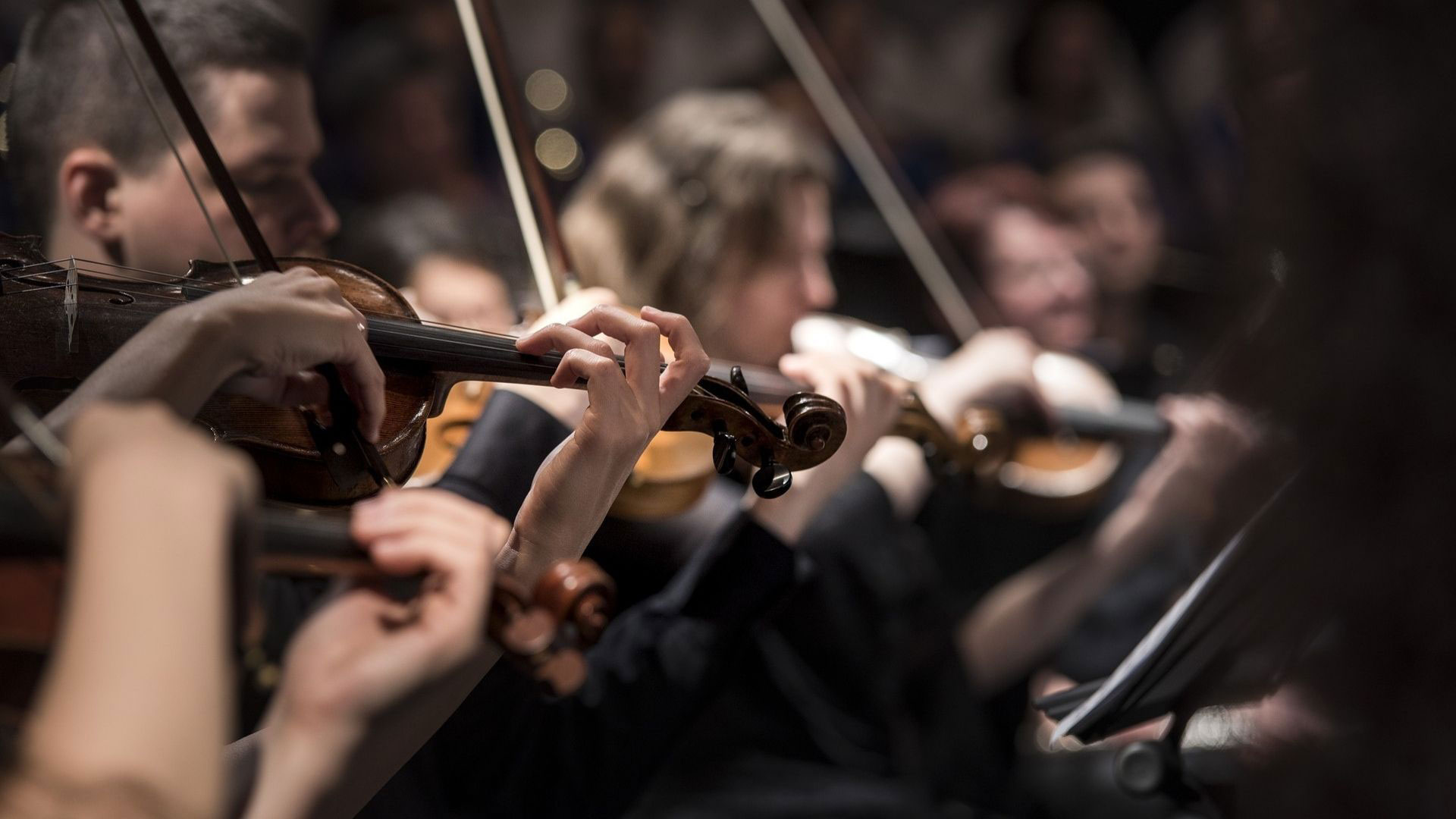Home>Production & Technology>Orchestra>How Can An Opera Singer Be Heard Over An Orchestra


Orchestra
How Can An Opera Singer Be Heard Over An Orchestra
Published: February 25, 2024
Learn how opera singers project their voices over the powerful sound of an orchestra. Discover techniques and training for commanding a stage with an orchestra.
(Many of the links in this article redirect to a specific reviewed product. Your purchase of these products through affiliate links helps to generate commission for AudioLover.com, at no extra cost. Learn more)
Table of Contents
Introduction
Opera is a mesmerizing art form that seamlessly combines the talents of singers and instrumentalists to create an unforgettable auditory experience. At the heart of this enchanting spectacle lies the delicate balance between the powerful resonance of an orchestra and the captivating vocals of an opera singer. The seemingly insurmountable task of projecting the human voice over a symphony of instruments is a testament to the remarkable skill and artistry of opera performers.
In the realm of opera, the acoustics of the performance venue play a pivotal role in determining how an opera singer can be heard over the orchestral accompaniment. The unique architectural design and acoustic properties of opera houses have been meticulously crafted to optimize the transmission of sound, ensuring that every note sung and played resonates with clarity and richness throughout the auditorium. Understanding the interplay between the acoustics of the opera house and the vocal prowess of the singer is essential to unraveling the mystery of how an opera singer conquers the symphonic storm.
Moreover, the vocal technique and training undergone by opera singers are integral to their ability to project their voices over the orchestral landscape. The rigorous and disciplined training regimen that opera singers undergo equips them with the vocal strength, control, and projection necessary to soar above the grandeur of the orchestra. It is through the mastery of breathing techniques, vocal resonance, and diction that opera singers harness the power of their voices to command the attention of the audience amidst the orchestral tapestry.
The conductor and the orchestra also play a pivotal role in creating a harmonious synergy that allows the voice of the opera singer to shine through. The conductor's adept leadership and the orchestra's dynamic interplay with the singer form the foundation upon which the vocal melodies ascend and intertwine with the orchestral arrangements. This collaborative effort is essential in ensuring that the singer's voice rises above the orchestral crescendos, creating an enthralling auditory experience for the audience.
In this article, we will delve into the intricate dynamics of opera performances, exploring the acoustics of opera houses, the vocal techniques employed by opera singers, the role of conductors and orchestras, and the utilization of microphones and amplification to unravel the enigma of how an opera singer's voice triumphs over the resplendent symphony of an orchestra.
Understanding the Acoustics of Opera Houses
The acoustics of an opera house form the very essence of the auditory enchantment that unfolds within its hallowed halls. These architectural marvels are meticulously designed to harness the intrinsic properties of sound, ensuring that every note sung and played resonates with unparalleled clarity and richness throughout the auditorium. The interplay of various elements, including the size and shape of the performance space, the materials used in construction, and the strategic placement of reflective surfaces, collectively contribute to the acoustic splendor that defines opera houses.
The architectural layout of an opera house is carefully crafted to optimize the transmission of sound, allowing it to effortlessly reach every corner of the auditorium. The expansive dimensions of the performance space, often characterized by soaring ceilings and sweeping balconies, serve to create an acoustic environment that facilitates the propagation of sound waves. The strategic arrangement of seating and the curvature of the space are ingeniously designed to minimize sound dispersion, ensuring that the auditory experience remains immersive and captivating for every member of the audience.
Furthermore, the materials utilized in the construction of opera houses play a pivotal role in shaping their acoustic characteristics. The selection of acoustically favorable materials, such as wood and plaster, contributes to the creation of a warm and resonant sonic environment. These materials possess the remarkable ability to reflect and diffuse sound, enriching the tonal quality and spatial distribution of the music and vocals. As a result, the opera house becomes a sanctuary where sound is sculpted and embellished, elevating the performance to transcendent heights.
In addition to the architectural and material considerations, the strategic placement of reflective surfaces within the opera house further enhances its acoustic prowess. These surfaces, meticulously integrated into the design, serve as acoustic mirrors that redirect and diffuse sound waves, fostering an enveloping auditory experience. By dispersing sound energy throughout the space, these reflective surfaces contribute to the creation of a balanced and immersive sonic environment, ensuring that the nuances of every vocal inflection and orchestral resonance are preserved and magnified.
In essence, the acoustics of opera houses represent a harmonious marriage of architectural ingenuity and sonic artistry. These revered institutions stand as testaments to the profound understanding of sound propagation and manipulation, creating a canvas upon which the symphonic grandeur and vocal brilliance of opera performances unfold with unparalleled clarity and splendor.
Vocal Technique and Training for Opera Singers
The art of opera singing demands a level of vocal mastery that transcends conventional musical performance. Opera singers undergo rigorous and comprehensive training to cultivate the exceptional vocal technique required to project their voices over the resplendent orchestral accompaniment and resonate with unwavering clarity throughout the expanse of the opera house.
Central to the training of opera singers is the cultivation of vocal strength and endurance. The demanding nature of opera repertoire necessitates a formidable vocal prowess that can sustain the rigors of extended performances, often spanning multiple acts and encompassing a wide range of vocal dynamics. Through specialized vocal exercises and training regimens, opera singers develop the muscular support and resilience essential for commanding the operatic stage with unwavering vocal fortitude.
Breath control stands as a cornerstone of opera singing, forming the bedrock upon which the soaring vocal melodies are built. Opera singers undergo intensive training to harness the power of breath, mastering the art of controlled inhalation and exhalation to fuel their vocal delivery with unwavering intensity and sustained resonance. The cultivation of diaphragmatic breathing techniques empowers opera singers to unleash the full potential of their voices, enabling them to project with unparalleled clarity and volume, effortlessly rising above the symphonic tapestry woven by the orchestra.
Furthermore, the refinement of vocal resonance and timbre constitutes a fundamental aspect of opera singing training. Opera singers meticulously hone their vocal timbre, imbuing their voices with a rich and resonant quality that captivates audiences with its emotive depth and expressive allure. Through the meticulous manipulation of vocal resonators and the precise shaping of vocal articulation, opera singers infuse their performances with a captivating tonal richness that transcends mere auditory splendor, evoking profound emotional connections with their audiences.
In addition to technical prowess, opera singers undergo comprehensive diction training to master the enunciation of operatic languages, ensuring that every lyrical nuance and poetic expression is conveyed with crystalline clarity. The mastery of phonetics and linguistic nuances enables opera singers to articulate each word and phrase with precision, transcending linguistic barriers to convey the profound emotional narratives that define the operatic repertoire.
The journey of an opera singer is one of relentless dedication and unwavering commitment to the pursuit of vocal excellence. Through the meticulous cultivation of vocal strength, breath control, resonance, and linguistic dexterity, opera singers ascend to unparalleled heights of vocal artistry, commanding the operatic stage with an awe-inspiring fusion of technical prowess and emotive depth.
The Role of Conductor and Orchestra
The conductor and the orchestra form the vibrant tapestry against which the operatic narrative unfolds, weaving a symphonic landscape that provides the canvas for the soaring vocal melodies of the opera singer. At the heart of this orchestral alchemy lies the pivotal role of the conductor, whose masterful guidance and interpretive prowess serve as the catalyst for the seamless integration of vocal and instrumental artistry.
The conductor stands as the maestro of the operatic ensemble, wielding a baton that orchestrates the ebb and flow of musical expression with precision and nuance. Through subtle gestures and impassioned movements, the conductor shapes the dynamics, phrasing, and emotive contours of the orchestral accompaniment, infusing each musical passage with a profound sense of narrative depth and dramatic resonance. It is through the conductor's adept leadership that the orchestra becomes a living, breathing entity, dynamically responding to the nuances of the vocal performance and coalescing into a harmonious symbiosis that elevates the operatic experience to transcendent heights.
The orchestra, comprising a diverse array of instrumental voices, serves as the sonic bedrock upon which the opera singer's vocal artistry flourishes. The interplay of strings, woodwinds, brass, and percussion creates a kaleidoscopic symphonic backdrop that envelops the audience in a rich tapestry of sound, evoking a myriad of emotions and conjuring vivid musical landscapes. Each section of the orchestra, meticulously honed and unified under the conductor's baton, contributes its unique timbral hues and expressive nuances, intertwining with the singer's voice to craft a multi-dimensional sonic tableau that resonates with unparalleled beauty and emotional resonance.
The conductor's role extends beyond mere temporal and dynamic control, encompassing a profound interpretive dimension that breathes life into the musical score. Through a deep understanding of the opera's dramatic context and thematic intricacies, the conductor infuses the orchestral accompaniment with a narrative eloquence that mirrors and enhances the emotional contours of the vocal performance. This symbiotic relationship between the conductor, the orchestra, and the opera singer engenders a synergistic fusion of musical expression, where each element coalesces to transcend the sum of its parts, culminating in an immersive and emotionally evocative operatic experience.
In essence, the conductor and the orchestra stand as stalwart collaborators in the grand tapestry of opera, their collective artistry serving as the luminous backdrop against which the opera singer's voice ascends to celestial heights. Through their consummate artistry and unwavering dedication, the conductor and the orchestra breathe life into the operatic narrative, infusing it with a resplendent vitality that resonates with the timeless allure of musical enchantment.
Utilizing Microphones and Amplification
In the realm of opera, where the resplendent power of the human voice converges with the symphonic grandeur of the orchestra, the utilization of microphones and amplification represents a delicate balancing act aimed at preserving the integrity of vocal artistry while ensuring optimal auditory projection and clarity. The judicious deployment of microphone technology and amplification systems in opera performances is a testament to the evolving landscape of operatic production, where tradition harmoniously intersects with technological innovation to elevate the auditory experience for contemporary audiences.
Microphones, meticulously selected for their sonic fidelity and unobtrusive design, serve as discreet conduits that capture the nuanced vocal inflections and emotive resonance of opera singers with unparalleled precision. Strategically positioned to harmonize with the acoustic properties of the performance space, these microphones function as unobtrusive allies, seamlessly integrating into the operatic mise-en-scène to amplify the sublime vocal artistry without overshadowing the organic resonance of the human voice.
Amplification systems, intricately calibrated to complement the acoustic characteristics of the opera house, serve as the conduit through which the ethereal vocal melodies of opera singers are channeled to every corner of the auditorium. Through the seamless interplay of amplifiers, speakers, and acoustical engineering, these systems delicately augment the natural projection of the human voice, ensuring that every whispered confession and triumphant aria reverberates with crystalline clarity and emotional immediacy, transcending the confines of the performance space to enrapture the hearts and souls of the audience.
The integration of microphones and amplification systems in opera performances represents a harmonious synergy between tradition and innovation, where the timeless allure of vocal artistry converges with the transformative potential of modern technology. By delicately enhancing the sonic landscape without compromising the organic resonance of the human voice, these technological marvels enrich the operatic experience, imbuing it with a transcendent vitality that resonates with the timeless allure of musical enchantment.
In essence, the judicious utilization of microphones and amplification in opera performances stands as a testament to the enduring commitment to preserving the integrity of vocal artistry while embracing the transformative potential of technological innovation. It is through this delicate equilibrium that opera continues to captivate audiences with its resplendent vocal artistry, seamlessly transcending temporal boundaries to resonate with the timeless allure of musical enchantment.
Conclusion
The wondrous realm of opera, with its resplendent tapestries of orchestral grandeur and the transcendent vocal artistry of opera singers, embodies a timeless allure that continues to captivate audiences across generations. As we unravel the enigma of how an opera singer's voice triumphs over the symphonic storm, we are drawn into a world where architectural marvels, vocal mastery, orchestral alchemy, and technological innovation converge to create an immersive and emotionally evocative operatic experience.
The acoustics of opera houses stand as testaments to the profound understanding of sound propagation and manipulation, shaping the sonic environment in a manner that ensures every note sung and played resonates with unparalleled clarity and richness. The architectural ingenuity and acoustical artistry of opera houses form the foundation upon which the operatic narrative unfolds, enveloping the audience in a symphonic embrace that transcends mere auditory splendor, evoking profound emotional connections.
The vocal technique and training undergone by opera singers represent a journey of relentless dedication and unwavering commitment to the pursuit of vocal excellence. Through the cultivation of vocal strength, breath control, resonance, and linguistic dexterity, opera singers ascend to unparalleled heights of vocal artistry, commanding the operatic stage with an awe-inspiring fusion of technical prowess and emotive depth.
The conductor and the orchestra, through their consummate artistry and unwavering dedication, breathe life into the operatic narrative, infusing it with a resplendent vitality that resonates with the timeless allure of musical enchantment. Their collaborative synergy creates a harmonious symbiosis that elevates the operatic experience to transcendent heights, where the voice of the opera singer soars amidst the symphonic splendor with unwavering clarity and emotional immediacy.
The judicious utilization of microphones and amplification in opera performances represents a harmonious synergy between tradition and innovation, delicately enhancing the sonic landscape without compromising the organic resonance of the human voice. Through this delicate equilibrium, opera continues to captivate audiences with its resplendent vocal artistry, seamlessly transcending temporal boundaries to resonate with the timeless allure of musical enchantment.
In the symphonic embrace of an opera performance, where the resplendent power of the human voice converges with the orchestral grandeur, we bear witness to a transcendent fusion of artistry and emotion that transcends the confines of the performance space, resonating with the hearts and souls of the audience. It is within this timeless allure of opera that we find the answer to the enigma, where the voice of the opera singer triumphs over the symphonic storm, ascending to celestial heights and etching indelible impressions upon the tapestry of musical enchantment.











